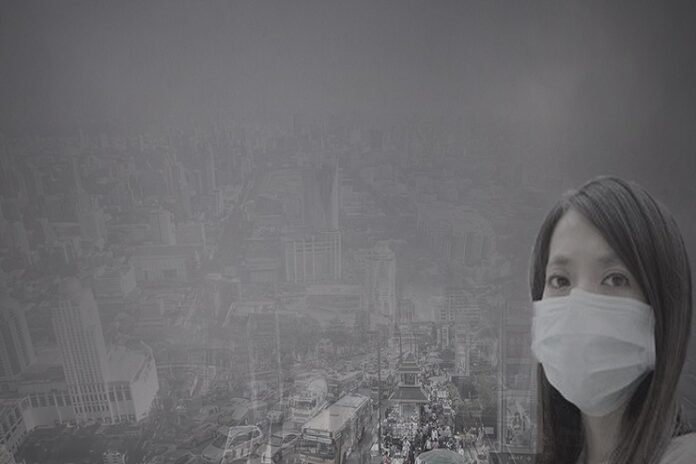The world has a great many hazards that rarely cross our minds. As an example, most people don’t think too much about the potential health consequences of the very air they breathe. Fumes from cars, industrial pollutants, and even toxic dust are commonplace in most major cities. In this article, we discuss some of the potential threats of toxic dust exposure. Understanding the sources of toxic dust, the health risks it presents, and the steps we can take to mitigate risks is crucial for protecting ourselves and those around us.
Table of Contents
What Are Possible Sources of Toxic Dust?
Many of the root causes of toxic dust are industrial in nature. In industrial settings, manufacturing and processing activities can generate fine particles containing harmful chemicals like lead, chromium, and silica. If inhaled, these deadly airborne particles can lodge deep within the lungs, causing significant health problems over time.
Construction sites are also oftentimes connected with toxic dust exposure. Respirable silica dust, released during activities like cutting concrete and stone, is a potent lung irritant and a known carcinogen. Construction workers that lack proper protection face an elevated risk of developing respiratory diseases and other health complications. In some cases, non-workers may be at risk too. During the 9/11 attacks, plumes of toxic dust were released over Manhattan, causing significant health impacts and necessitating the creation of countless Victims Compensation Fund claims.
Even within the comfort of our own homes, there is still a threat of toxic dust exposure. While common household dust is not toxic, it does contain a complex mixture of allergens like pollen, pet dander, and dust mites. This can trigger a person’s allergies or asthma. Additionally, exposure to lead dust from deteriorating paint or older homes can pose serious health risks, particularly for children.
Potential Health Risks of Toxic Dust Inhalation
Depending on the nature of toxic dust and the time period of exposure, a victim may suffer health effects ranging from mild irritation to life-threatening conditions. Individuals with pre-existing respiratory conditions like asthma and allergies may notice worsened symptoms such as coughing, wheezing, and difficulty breathing.
Prolonged exposure to toxic dust without proper protection can lead to significant health problems. Some people who are exposed to toxic dust over a long period may develop chronic obstructive pulmonary disease (COPD), a progressive lung condition that gradually limits airflow. Workers in industries like mining, construction, and agriculture are particularly vulnerable to developing COPD, since they are at increased risk of coming into contact with toxic dust on a regular basis.
Certain types of toxic dust are also carcinogenic. Long-term exposure to these dusts can significantly increase a person’s risk of developing a number of respiratory cancers. Some toxins may even be able to get into the human body’s bloodstream via the lungs, potentially damaging other organs and systems within the body. This type of toxic dust can result in a multitude of debilitating or fatal conditions.
Mitigating the Risks of Toxic Dust Exposure
Luckily, it is possible to avoid the worst side effects of toxic dust exposure by using proper protective equipment and following industry safety protocols. If you are in a position where you reasonably expect to encounter toxic dust on a regular basis, you may consider:
- Using Personal Protective Equipment (PPE): Workers in dust-prone environments should always be equipped with PPE that is appropriate for their industry. Depending on the work in question, workers should have respirators, goggles, and protective clothing that minimizes exposure. PPE should be checked regularly for defects and to ensure it is properly fitted to an individual worker.
- Implementing Engineering Controls and Dust Suppression: In industrial settings, ventilation systems and dust suppression techniques play a crucial role in preventing dust buildup.
- Improving Indoor Air Quality: Within your own home, there are some easy steps you can take to minimize the amount of dust buildup. You may consider vacuuming regularly, using an air purifier, and mopping up loose dust with a wet mop to create a clean and safe household.
- Undergoing Regular Medical Check-ups: If you work in a high-risk environment, you should undergo regular medical check-ups to check for any symptoms of respiratory problems. Early detection and proper medical care can help you manage the effects of dust exposure if you display symptoms of adverse health effects.
Reducing the Risks of Toxic Dust Exposure
Combating the threat of toxic dust requires a collective effort. To begin with, raising awareness of the problem is crucial. From there, we need to do a better job of providing at-risk workers with effective protection, so they can work without fear of debilitating long-term medical conditions. Finally, implementing effective dust control measures is crucial to safeguard both workers and the public from unnecessary risk. We hope this article helps raise public awareness about the potential risk factors of toxic dust exposure!




